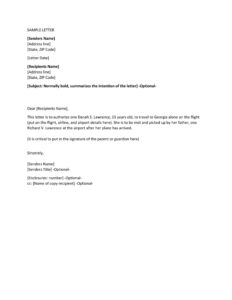An email acceptable use policy template is an essential document that outlines the rules and guidelines for employees’ use of email within an organization. It aims to ensure that employees use email responsibly, efficiently, and in a manner that aligns with the company’s objectives and values. This blog post provides a comprehensive email acceptable use policy template that can be customized to fit the specific needs of your organization. Additionally, we’ll discuss some key points to consider when drafting this policy to ensure its effectiveness.
An email acceptable use policy is vital in today’s digital landscape, where email has become a primary tool for communication and collaboration. It helps prevent inappropriate or unethical use of email, safeguards sensitive information, protects against legal liabilities, and promotes a more professional and productive work environment. As such, organizations should give high priority to implementing a well-crafted email acceptable use policy.
Guidelines for Composing an Effective Email Acceptable Use Policy
Purpose and Scope
The email acceptable use policy template defines the purpose and scope of the policy, stating its objectives and the employees to whom it applies.
Explain the policy’s primary goal of promoting responsible and efficient email usage, ensuring compliance with applicable laws and regulations, protecting sensitive data, maintaining a positive reputation, and fostering a productive work environment.
Clearly identify the employees covered by the policy, such as full-time, part-time, remote, and temporary employees, contractors, and interns.
Acceptable and Unacceptable Email Use
The policy should clearly define acceptable and unacceptable email use. Acceptable use may include tasks, communication, data sharing, and collaboration. Unacceptable use may include personal use, illegal activities, confidential data sharing, offensive or harassing language, and using company email for commercial purposes.
Provide specific examples of acceptable and unacceptable use to ensure employees have a clear understanding of what constitutes appropriate email usage.
Emphasize the importance of respecting copyright laws and obtaining consent before forwarding copyrighted material. Highlight the prohibition of using company email to engage in illegal activities, such as phishing, spamming, and spreading malware.
Confidentiality and Privacy
This section of the email acceptable use policy template addresses the confidentiality and privacy of email communications.
Ensure employees understand the importance of maintaining confidentiality by not disclosing sensitive information to unauthorized individuals. Make it clear that employees should not access or use other employees’ email accounts without authorization.
Explain how the organization handles and protects personal data collected through email correspondence. Inform employees of their rights regarding their personal data, such as the right to access, modify, or delete it.
Security and Data Protection
The policy must address security measures to protect email accounts and sensitive information.
Emphasize the importance of creating strong passwords and regularly changing them to prevent unauthorized access. Educate employees on phishing scams and social engineering attacks and advise them to be cautious when opening suspicious emails or clicking links from unknown senders.
Outline procedures for employees to follow when they suspect a security breach, such as a lost or stolen device or a suspicious email. Specify the consequences for violating the security provisions outlined in the policy.
Monitoring and Enforcement
The email acceptable use policy template must address how the organization monitors and enforces the policy.
State that the organization reserves the right to monitor email communications to ensure compliance with the policy and applicable laws. Specify the methods used for monitoring, such as automated scans and manual reviews.
Explain the consequences for violating the email acceptable use policy, ranging from warnings and reprimands to disciplinary action or even termination of employment. Encourage employees to report any violations they observe to appropriate authorities within the organization.
Conclusion
In conclusion, an email acceptable use policy is a vital tool for organizations to establish clear guidelines for email usage, protect sensitive information, and foster a professional and productive work environment. By implementing a comprehensive email acceptable use policy, organizations can mitigate risks, ensure compliance with relevant laws and regulations, and maintain their reputation.
Organizations should regularly review and update their email acceptable use policy to reflect changes in technology, legal requirements, and organizational practices. This ensures that the policy remains effective in addressing emerging challenges and maintaining a safe and responsible email environment.
FAQ
What is an email acceptable use policy template, and why is it important?
An email acceptable use policy template provides a framework for organizations to define acceptable and unacceptable email usage, ensuring responsible and efficient email communication. It helps protect sensitive information, maintain compliance, and foster a productive work environment.
What are some key considerations when drafting an email acceptable use policy?
When drafting an email acceptable use policy, it’s essential to clearly define the purpose, scope, acceptable and unacceptable use, confidentiality, privacy, security, monitoring, and enforcement mechanisms. The policy should align with the organization’s values, legal requirements, and industry best practices.
What are some common acceptable uses of email?
Acceptable use of email may include tasks like sending and receiving work-related messages, communicating with clients and colleagues, sharing files and documents, and collaborating on projects. It also includes using email for official communication, accessing company resources, and participating in internal discussion forums.
